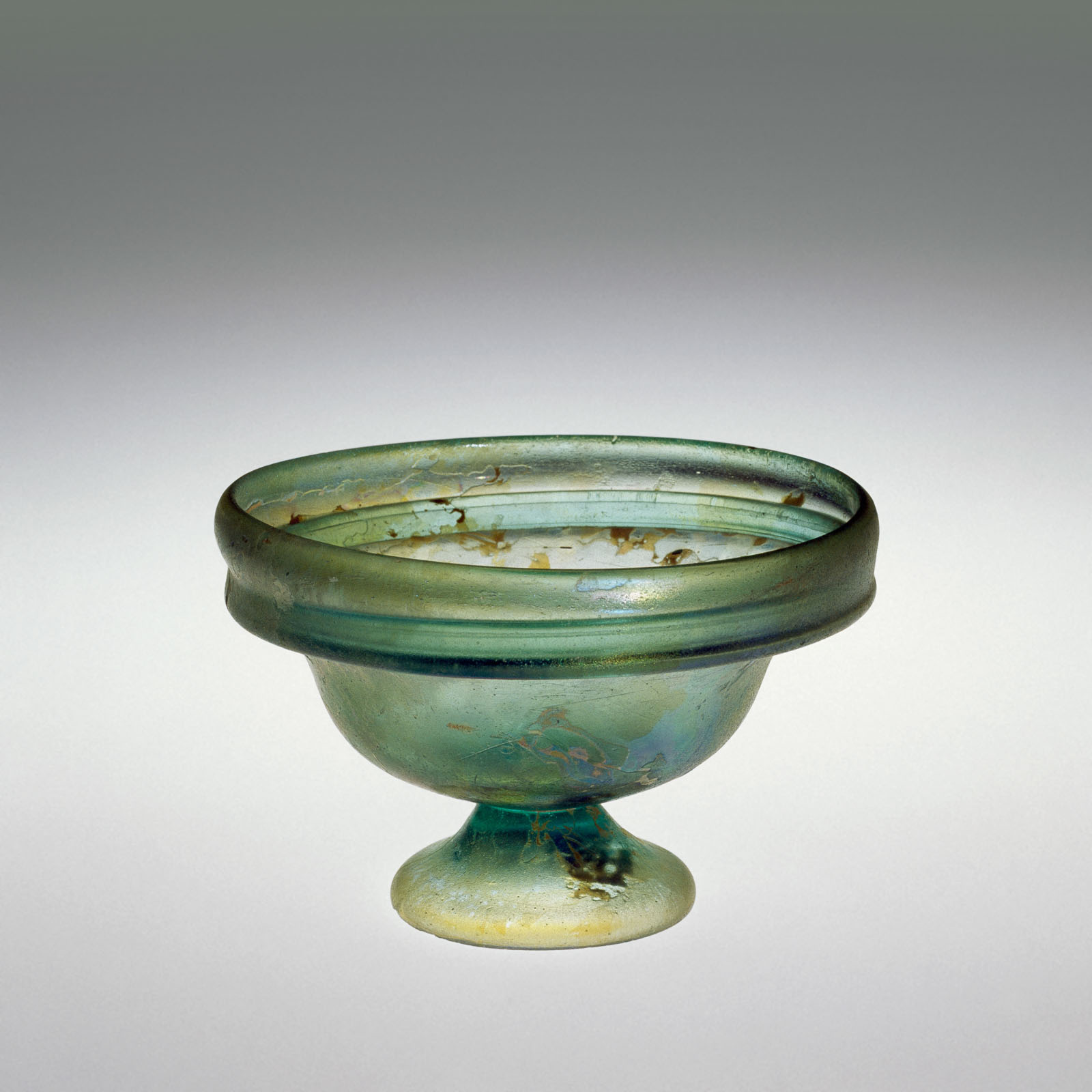
I would like to think that the first glassblowers who thought of joining two bubbles of hot glass at their tips were excited by the technological door they had opened. This new process—creating compound structures by adding multiple hollow elements together—greatly increased the architectural/design possibilities of Roman-period glass (Fig. 72).
When did it begin? Certainly by the mid-first century A.D. If we are to believe that the celebrated Ennion was working at about that time, the technique was probably already being used. This is because Ennion ewers (pitchers) were made by joining two bubbles of hot glass while also using the technique of full-size mold-blowing (Fig. 73)1. It, too, was new at that time. The process is difficult enough when joining free-blown parts. Adding the complication of synchronizing two glassblowing teams using full-size mold-blowing to make the parts is markedly more difficult. I strongly suspect that, in the case of his mold-blown ewers, Ennion was elaborating on an existing process that he had already mastered in its simpler form.
In fact, on the subject of Ennion, we know very little beyond what can be gleaned from the tabula ansata (literally, “tablet with handles,” the small area where his name appears on each object) on his mold-blown wares and scant data from excavations. We do not know whether he was the workshop’s owner, the moldmaker, the glassblower, or some combination thereof. Where he worked is also a mystery. The most recent major publication claims “30–70 AD” as his probable period of activity.2 All of this is to suggest that, if Ennion was a glassblower, for years we have very likely been looking—unawares—at a host of other objects made by him.
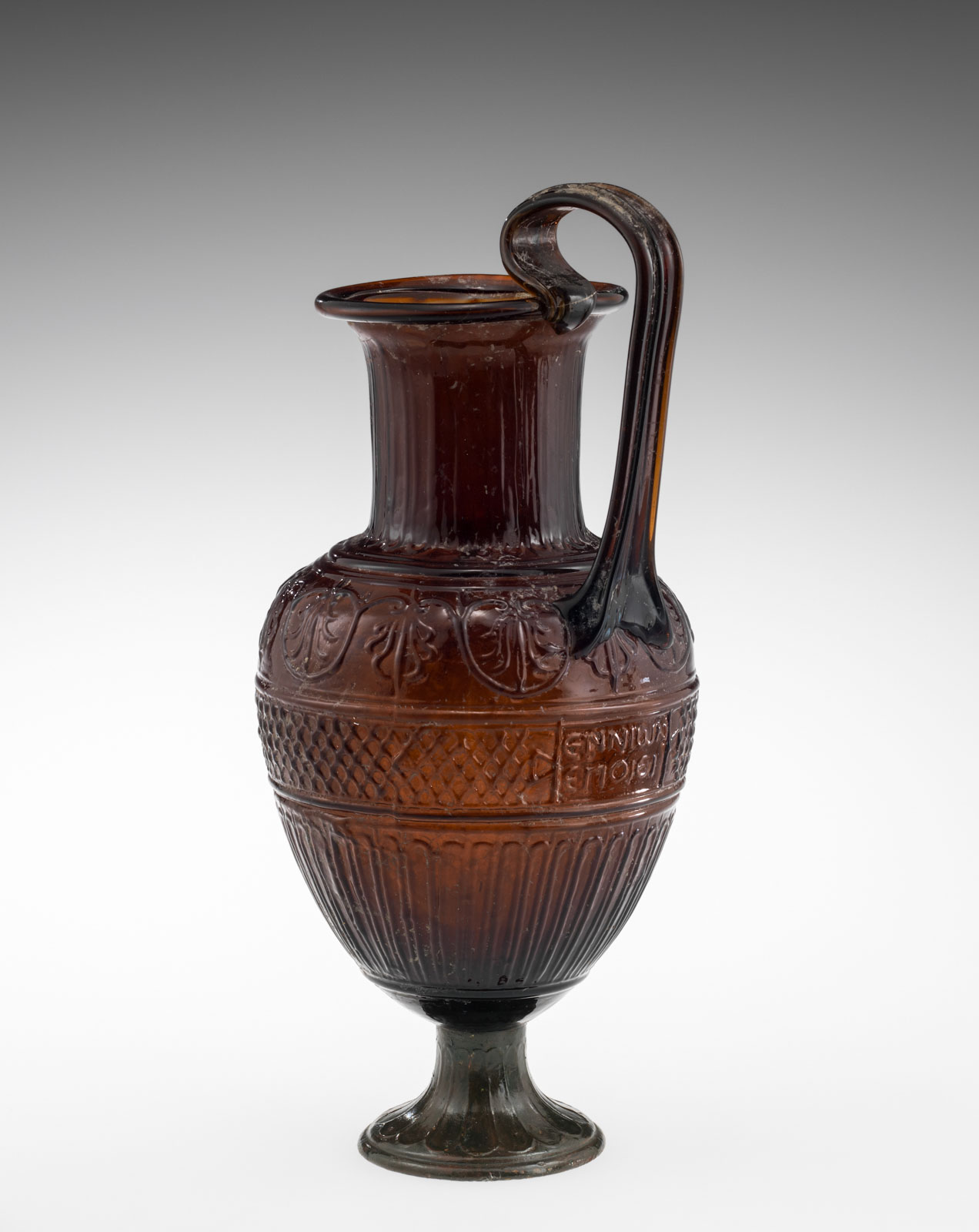
Figure 72 is an object made by the same process that Ennion employed for making his footed vessel—except that, in this instance, the two parts were made by free-blowing. It has an unusual double-folded rim, both folded outward. Note, in the video, that the blowpipe for the foot bubble is used to hold the vessel—punty-like–while it is completed (Vid. 51).
The rhyton in Figure 74 is a fine example of the playful inventiveness that Roman-period glassblowers could exhibit (Vid. 52). It, too, has an added foot with a cracked-off rim.
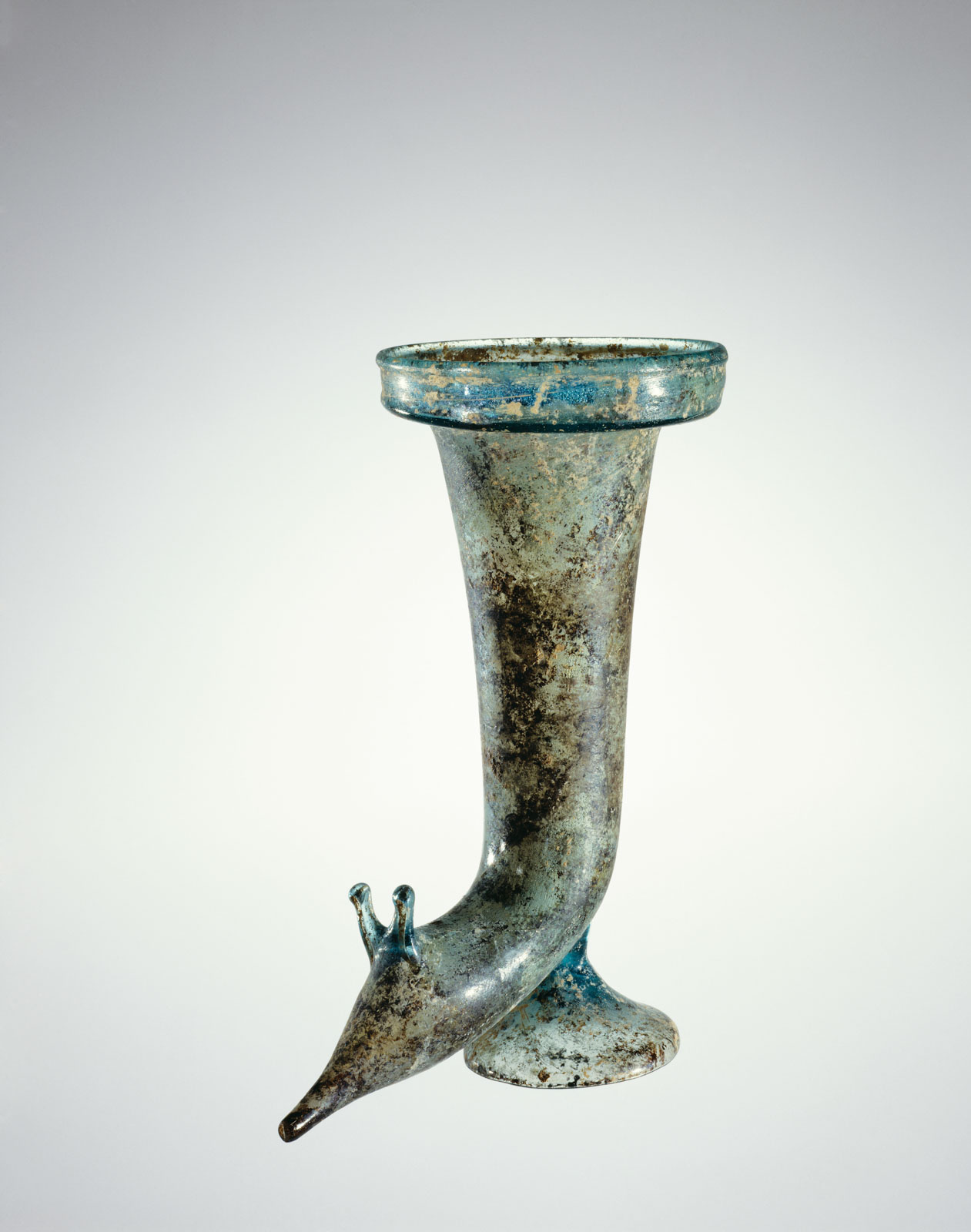
At first glance, the flute in Figure 75 might appear to have an added foot with a cracked-off rim—more of the same. However, that is not the case. This is an added foot with a furnace-finished rim (Vid. 53). Its difference is evident upon close examination. Cracked-off rims have an angular edge that has been crudely cold-worked to make it smoother; invariably, this leaves it slightly chipped. The glass in the vicinity of the rim is pristine, free of any toolmarks. By comparison, furnace-finished rims are smooth and rounded, often thickened at the edge, and they always have hot-worked toolmarks on their inner surface.
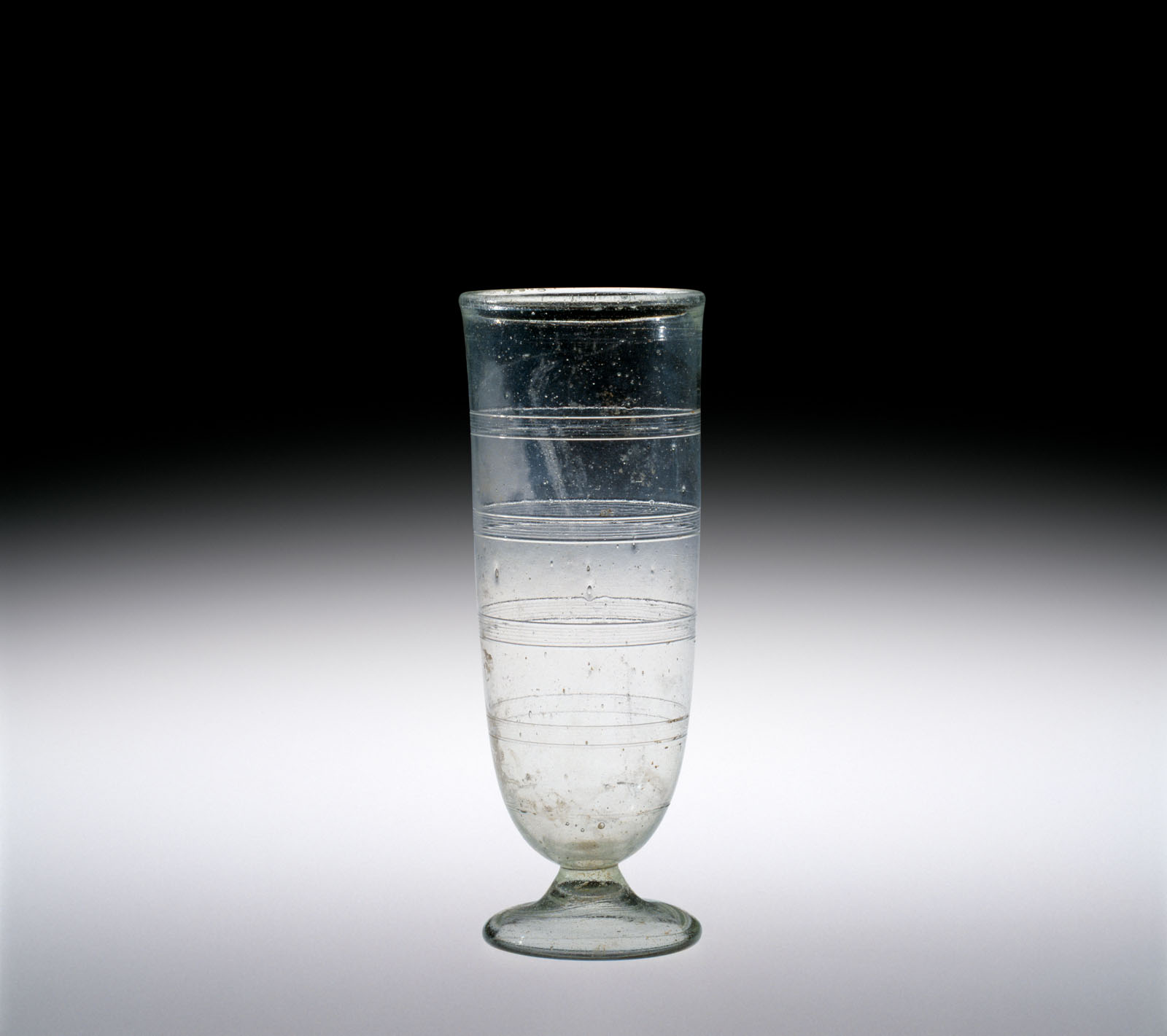
In the process of manufacture, both types begin in the same manner: a bubble of soft glass with a constriction near its blowpipe is joined to the base of a nascent vessel. Then the processes diverge. For the cracked-off rim, the foot’s blowpipe is used as a handle—effectively a punty—that allows the reheating and shaping of the vessel’s opening. For a furnace-opened rim, the foot’s blowpipe is broken away at the constriction, thus leaving a hole. Then the opening is reheated and then flared to form its final shape. A punty is then attached to the center of the foot, and the vessel is broken free of its blowpipe. The opening is reheated and given its final shape. (Please review videos 51 and 53 for clarity.)
Assuming that the foot-making processes in the first century progressed from the easier process to the more difficult, the cracked-off rim came first and furnace-finished rim came later. However, because of the difficulty—for now, anyway, the impossibility—of dating these objects with anything approaching precision, one can only speculate. In any case, after their invention in the first century A.D., both types of added feet became essential elements in countless glassworking traditions that have lasted to our time. For example, the cracked-off, added foot can be seen in the beautiful vessels designed by Josef Hoffmann about 1900 (Fig. 76). The furnace-opened foot (in our time usually called a “blown-foot”), a staple of Venetian glassblowers during the Renaissance (Fig. 77), has lasted to today (Fig. 78)3.
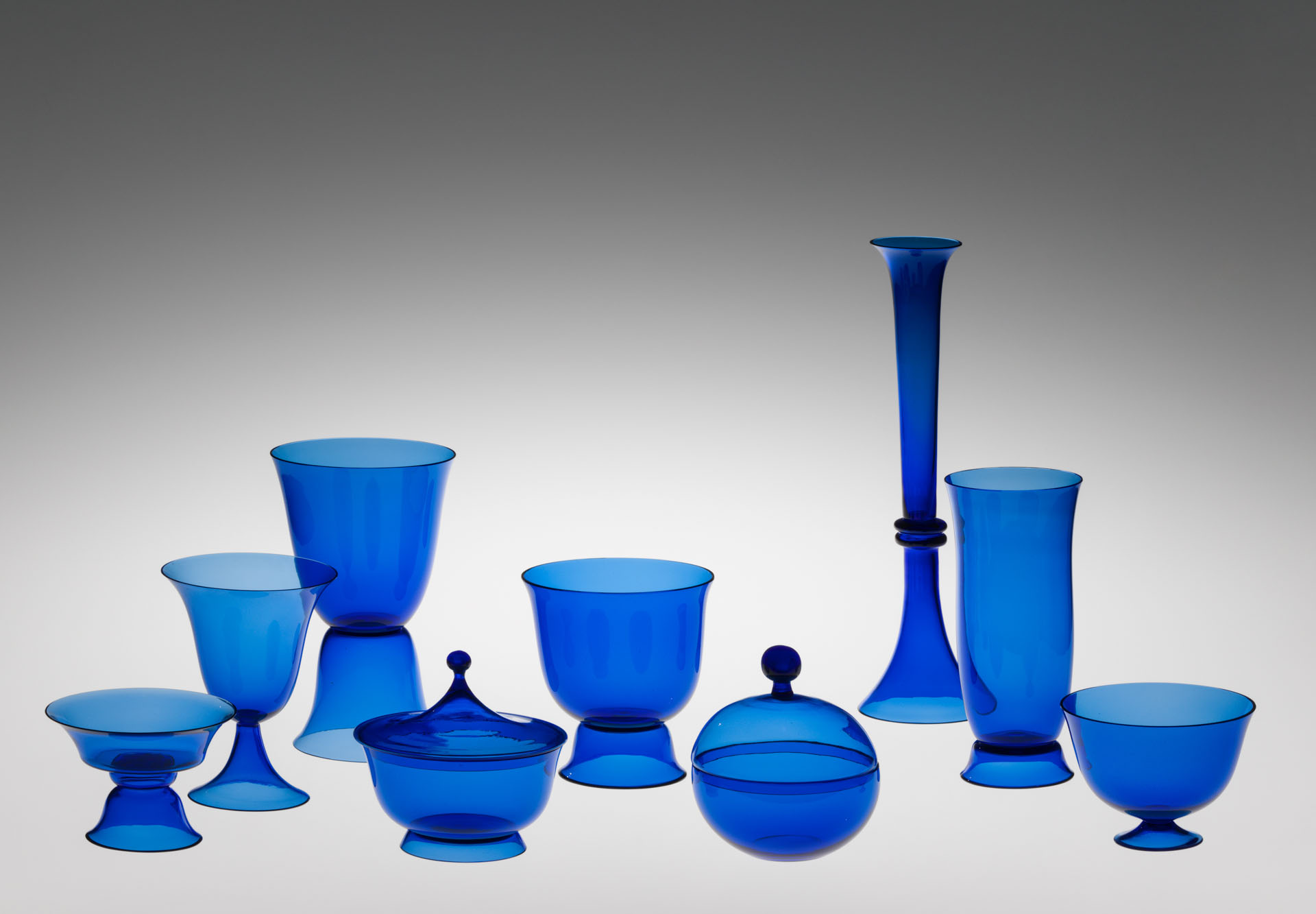
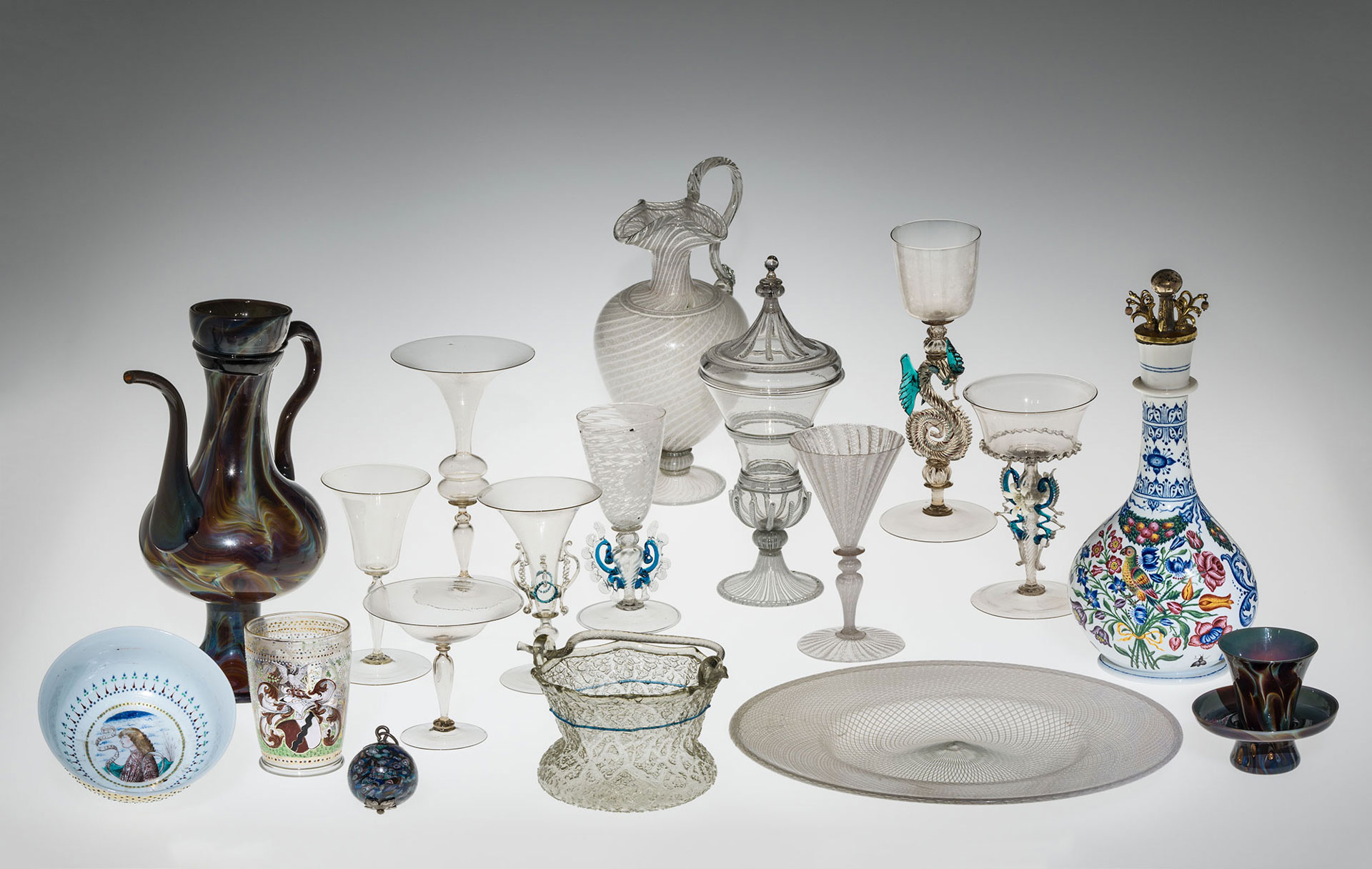
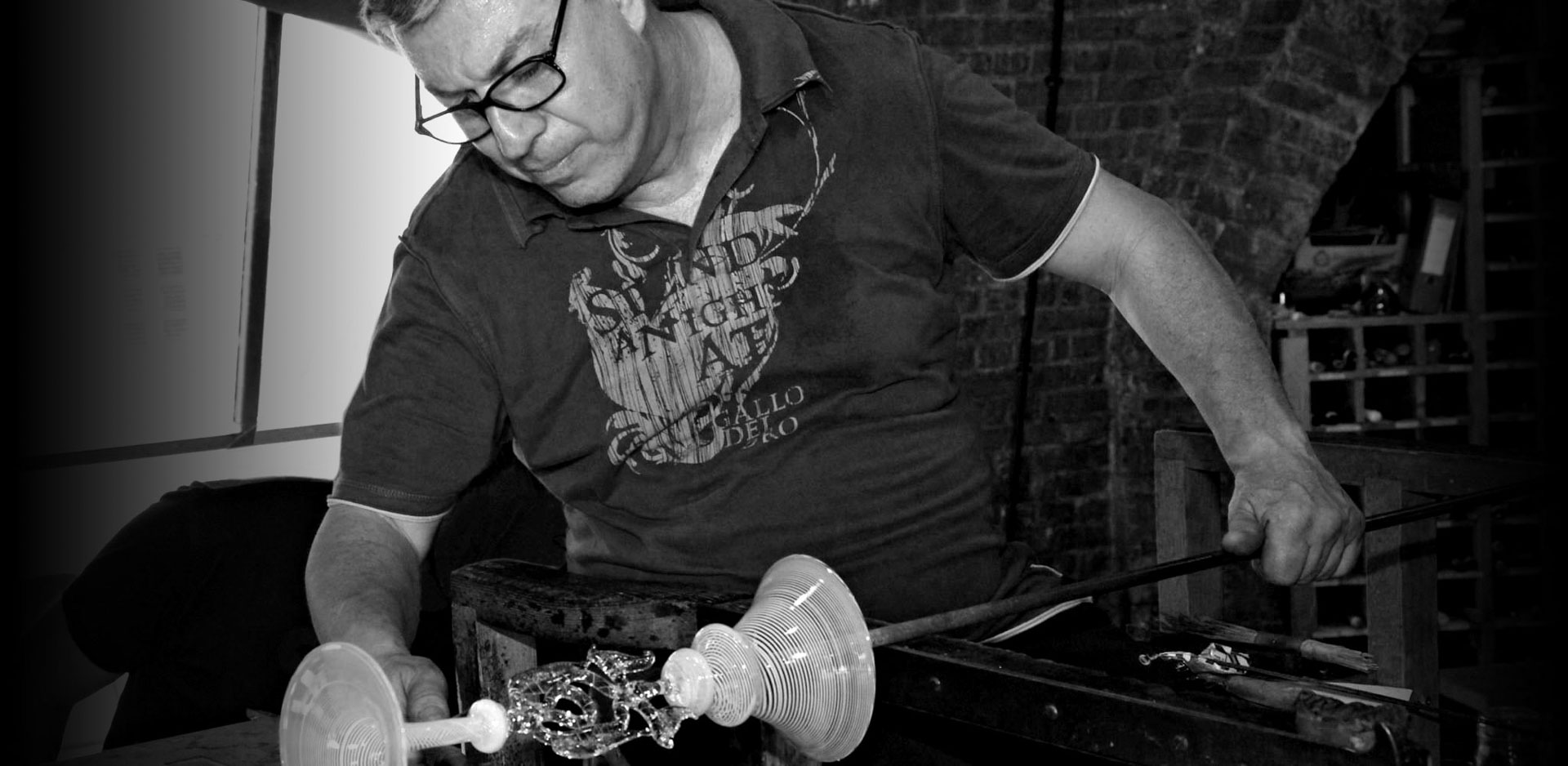
Notes
-
For a video of Mark Taylor and David Hill’s reconstruction of the molds and processes likely used to make replicas of Ennion jugs, see https://youtu.be/jaODucearU8?si=SQFeJ8L9-Zsu2UrL ↩︎
-
Christopher S. Lightfoot, “Ennion and the History of Ancient Glass,” in Christopher S. Lightfoot and others, Ennion: Master of Roman Glass, New York: The Metropolitan Museum of Art, 2014, pp. 15–48, esp. “Dating the Works,” pp. 25–26. ↩︎
-
Based on experiments, I believe that added feet were attached from the side in the Roman period (see Videos 51–53), and that they were probably added from above in later periods and locations. For example, Renaissance Venetian workshops always seem to have added them from above. See “Enameled Goblet” and “Enameled Tazza” in The Techniques of Renaissance Venetian Glassworking. ↩︎